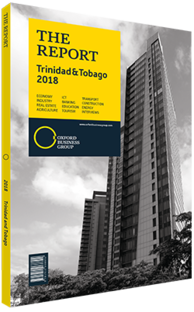Growth in Trinidad and Tobago's debt markets fuelled by public borrowing
Capital market debt issuances out of Trinidad and Tobago remain relatively flat year-on-year. After a peak performance in 2016, when 25 issues raised $13.5bn, the primary market generated an approximate $12bn in 2017 across 27 issues, and a further $12bn in the first eight months of 2018. Debt issues in the country have predominantly stemmed from the energy, financial services and telecommunications industries. The public sector remains the dominant borrower, with the central government, its agencies and state-owned enterprises coming to the market most frequently.
Energy & State Debt
Growth in the value of the debt market since 2013 has been the result of increased government borrowing, especially since global oil prices began their downward trend in late 2014. Continuous budget deficits and an unwillingness by policymakers to privatise state-owned enterprises have played the biggest roles in contributing to this borrowing. Furthermore, the outlook for the petrochemicals industry remains uncertain, especially in the face of increased shale gas production in the US, which has coincided with curtailments and reduced production of natural gas locally. The construction of ports and new liquefied natural gas (LNG) export centres along the southern coast of the US has likewise reduced international LNG and liquefied petroleum gas prices, and forced a shift in T&T’s export markets. Volatility in ammonia, methanol and urea prices has also affected the tax revenue that the central government relies upon.
Changing energy prices, combined with the reduced profitability of state-run utility companies and lower tax volumes, have resulted in government revenues shrinking by approximately $21bn annually. Expenditures, meanwhile, have been reduced by $12bn, leading the state to turn to the capital markets to help plug the deficit. Given that local currency interest rates remain low by historical standards, government borrowing could remain strong for the foreseeable future, despite the fact that the fiscal deficit needs to be eliminated.
Corporate Activity
Corporations have also gradually increased borrowing in the market, taking advantage of excess liquidity and low interest rates to finance projects. A modest increase in merger and arbitrage opportunities in the consumer goods and industrial sectors has energised a traditionally moribund segment. Capital outlays, especially in the telecommunications sector in the face of an evolving technological landscape, have been another boost to activity.
Still, the largest corporate borrowers remain state-owned companies that have had to increasingly rely on debt financing to fund their development. While this over-concentration in the segment heightens risks for investors, gearing ratios have remained relatively stable through the recession. Despite the government increasing the corporate income tax rate from 25% to 30% in FY 2018 for non-bank entities earning more than TT$1m ($148,300) per year, corporate cash flows have remained reasonably robust. Although revenue growth and margins have contracted slightly, especially in the construction and manufacturing sectors, credit risk measures have stayed well below distressed levels.
Policy Moves
Looking ahead, the Monetary Policy Committee (MPC) of the central bank raised the repo rate from 4.75% to 5% on June 29, 2018, citing the negative differential between short-term interest rates in the US and T&T. This inversion in rates could put pressure on T&T’s balance of payments and result in further portfolio outflows to US dollar-denominated assets. As the US Federal Reserve looks poised to raise interest rates to 2.5% by the end of 2018, the spread in rates between the two currencies could become more negative. The market should therefore expect that the central bank will raise rates at least a further two times to combat the curve inversion. Consequently, short-term rates could rise gradually, despite the excess liquidity in the market. This outlook should encourage borrowers to enter the market and complete their financing activities before future MPC meetings.
You have reached the limit of premium articles you can view for free.
Choose from the options below to purchase print or digital editions of our Reports. You can also purchase a website subscription giving you unlimited access to all of our Reports online for 12 months.
If you have already purchased this Report or have a website subscription, please login to continue.

